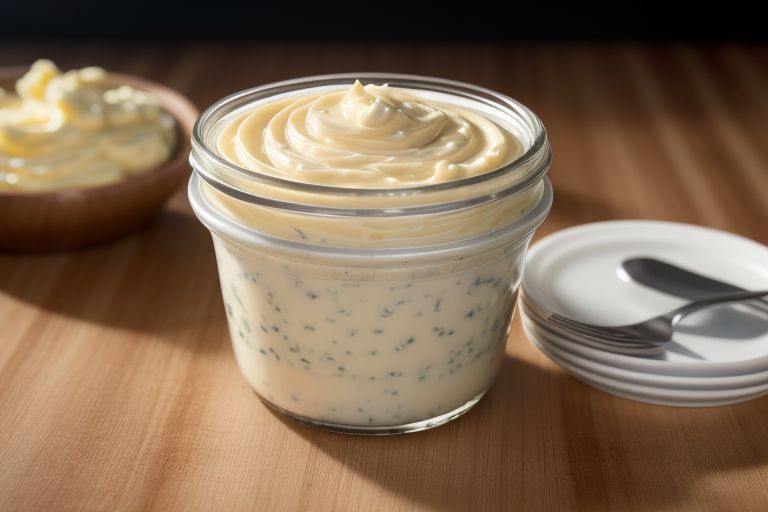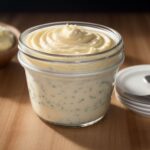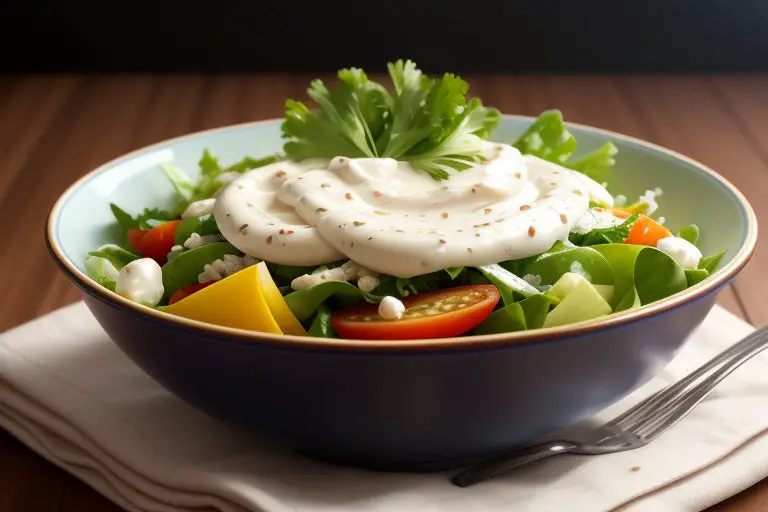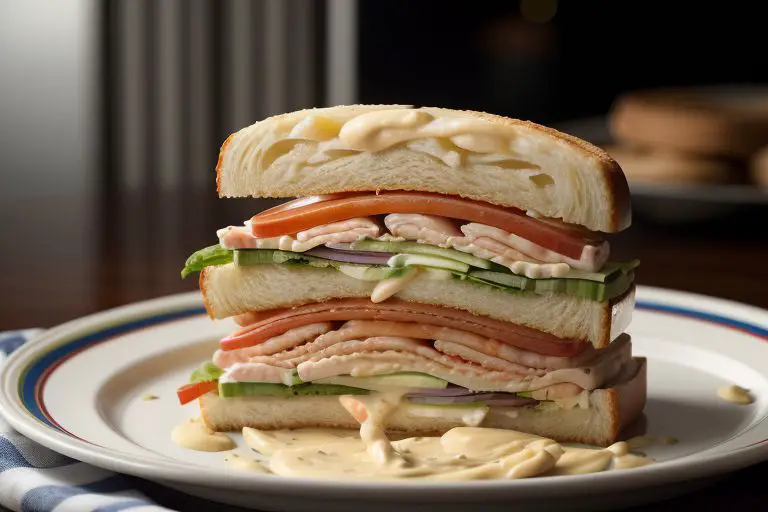Contents
Introduction
Homemade mayonnaise is a culinary delight that elevates everyday meals with its rich flavor and creamy texture, distinguishing itself from mass-produced alternatives. This versatile condiment, an emulsion of egg yolks, oil, and an acid such as vinegar or lemon juice, serves as a foundation for countless recipes, from classic sandwiches to gourmet dressings. Making mayonnaise at home not only allows for greater control over ingredients but also offers a unique opportunity to customize flavors to suit individual tastes.
The process, while seemingly simple, requires precision and technique to achieve the perfect emulsion—an ideal balance of oil and egg that results in a stable and luscious spread. By opting for homemade mayonnaise, chefs and home cooks alike can bypass artificial preservatives and additives commonly found in store-bought versions, embracing a fresher and more health-conscious choice.
In this article, we will explore the fundamental principles of creating homemade mayonnaise, provide step-by-step instructions, and offer tips for incorporating various flavor profiles to enhance your culinary creations. Whether you are a seasoned chef or a novice in the kitchen, making mayonnaise from scratch is a rewarding endeavor that promises to transform your dining experience.
The History of Mayonnaise
Mayonnaise has a rich and fascinating history that dates back to the 18th century. The origins of mayonnaise are often attributed to the French chef of the Duke of Richelieu, chef Marie-Antoine Carême, who created a sauce in 1756 to celebrate the capture of Mahón, a city in Spain. This sauce, made from egg yolks and oil, eventually evolved into what we now recognize as mayonnaise. The technique of emulsifying ingredients to create a creamy condiment gained popularity throughout Europe, particularly in France, where it became a staple in many dishes.
By the late 19th century, mayonnaise found its way to America, where it was embraced and adapted into various recipes, including salads and sandwiches. The rise of commercial mayonnaise brands in the early 20th century made the condiment even more accessible, but many home cooks continued to prefer the fresh taste and quality of homemade versions.
Today, making mayonnaise at home is celebrated for its simplicity and the ability to customize flavors, allowing for a personal touch in culinary creations. The resurgence of interest in homemade foods has led to a revival of traditional cooking techniques, and many people, including the reader, can now enjoy making mayonnaise from scratch as a way to connect with culinary history while creating delicious, fresh condiments for their meals. This enduring popularity of homemade mayonnaise showcases not only its versatility but also the timeless appeal of crafting food from simple, high-quality ingredients.
Mayonnaise Recipe
One can get much satisfaction making somethings from scratch instead of buying from the supermarket. Making the best homemade mayonnaise is a rewarding culinary endeavor that elevates sandwiches, salads, and dips with its fresh flavor. Start by gathering your ingredients

Ingredients:
1 cup olive or avocado oil
1 egg, at room temperature
1 pinch salt
1 teaspoon lime juice
1 tablespoon white vinegar
1 teaspoon Dijo mustard
Direction:
Place one egg at the bottom of a tall, narrow container. Then add oil and the other ingredients. Using an immersion blender, blend these ingredients at the bottom of the container for about 20 seconds until well combined.
Gradually add the oil in a slow, steady stream while continuing to blend. As you pour in the oil, you’ll notice the mixture start to emulsify and thicken beautifully. Continue blending until all the oil is incorporated and the mayonnaise reaches your desired consistency of mayonnaise, thick and fluffy.
Season with salt to taste, and feel free to get creative by adding herbs, garlic, or spices for additional flavor.
Homemade mayonnaise can be stored in the refrigerator for up to a week, allowing you to enjoy its rich, creamy texture in various dishes. The process is quick and simple, and the flavor is incomparable to store-bought varieties.
It’s important to ensure that your egg is at room temperature, as this helps achieve a smoother emulsion. Experimenting with different oils or adding a touch of honey or sriracha can also result in unique and delicious variations.
Print this recipe

Homemade Mayonnaise
Equipment
- 1 immersion blender,
Ingredients
- 1 cup olive or avocado oil
- 1 egg, at room temperature
- 1 pinch salt
- 1 tsp. lime juice
- 1 tbsp. white vinegar
- 1 tsp. Dijo mustard
Instructions
- Place one egg at the bottom of a tall, narrow container. Then add oil and the other ingredients. Using an immersion blender, blend these ingredients at the bottom of the container for about 20 seconds until well combined.
- Gradually add the oil in a slow, steady stream while continuing to blend. Continue blending until all the oil is incorporated and the mayonnaise reaches your desired consistency of mayonnaise, thick and fluffy.
- Season with salt to taste, and feel free to add herbs, garlic, or spices for additional flavor.
- Homemade mayonnaise can be stored in the refrigerator for up to a week.
Notes
The Many Use of Mayo
Overall, making homemade mayonnaise is not only easy but also a delightful way to enhance your culinary creations. Enjoy the satisfaction of crafting your own mayonnaise, which is fresh, flavorful, and free from preservatives.
Homemade mayonnaise is a versatile condiment that can elevate a wide range of dishes. Its creamy texture and rich flavor make it an ideal base for salad dressings, adding depth to greens or pasta salads. By incorporating various herbs and spices, homemade mayonnaise can be transformed into zesty dips for fresh vegetables or crispy chips, catering to different taste preferences for gatherings or casual snacking.

Additionally, it serves as a delicious spread for sandwiches and wraps, enhancing the overall flavor profile of meats, cheeses, and vegetables. For those looking to experiment in the kitchen, homemade mayonnaise can be infused with garlic or sriracha for a spicy twist, perfect for burgers or seafood.
Its creamy texture and rich flavor make it an ideal base for countless sauces, from tangy aioli to zesty tartar sauce, which can enhance seafood and sandwich recipes.
Additionally, it serves as a crucial ingredient in various baked goods, adding moisture to cakes and muffins. With its customizable flavor profile, homemade mayonnaise can incorporate different herbs, spices, and even citrus for a unique twist, making it a staple in any kitchen.

Furthermore, it can be used to bind ingredients in recipes like tuna or chicken salads, creating a satisfying meal option. Overall, the uses of homemade mayonnaise are limited only by one’s creativity, making it a staple in many kitchens.
In conclusion, making homemade mayonnaise is not just about blending eggs and oil; it’s an alchemical dance that transforms simple ingredients into a creamy, velvety delight that elevates any dish. With each whisk, you’re not just crafting a condiment—you’re infusing your culinary creations with love and a touch of magic. So the next time you find yourself reaching for that store-bought jar, remember the joy and satisfaction of creating your own. Embrace the mess, experiment with flavors, and let your taste buds revel in the richness of something truly homemade. After all, in the world of mayonnaise, why settle for ordinary when you can whip up extraordinary?
